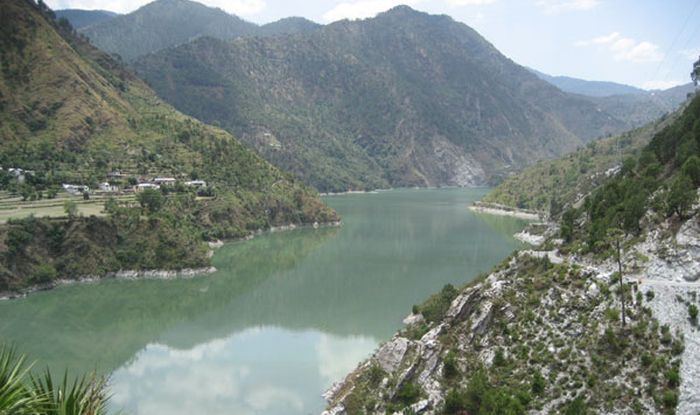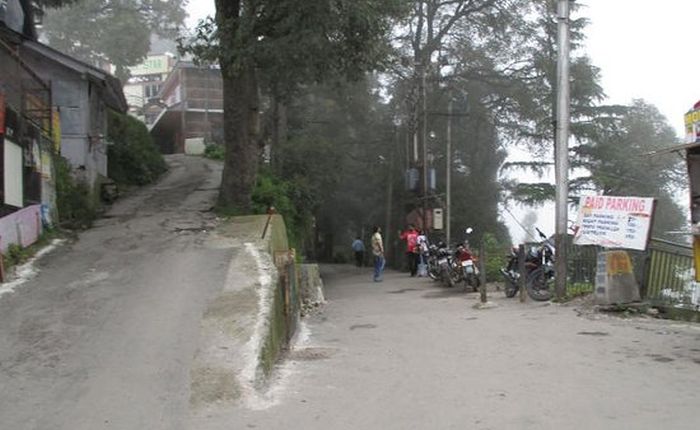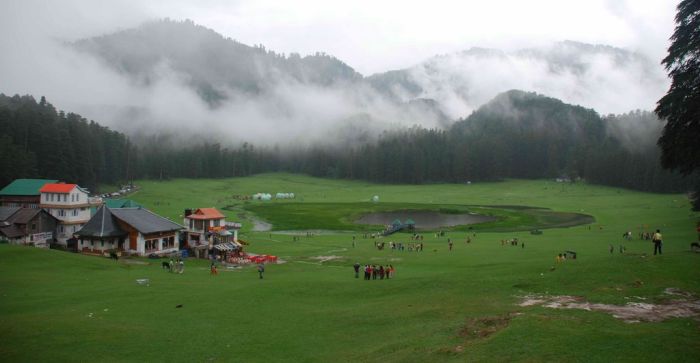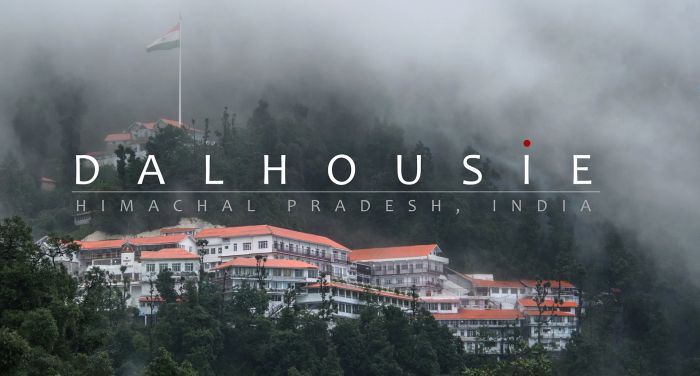On the western border of Himachal Pradesh, Dalhouise is a cool hill retreat and not just a passageway to the enchanting hills of Chamba. It boasts of some of the most spectacular landscapes anywhere in the state. To the north, it is shielded by a tattered fringe of lofty Dhauladhar peaks. Down below, the valley is strewn with steep gorges that eventually plunge and disappear into the fast flowing Ravi River.

Relatively small, the hill town spreads across a length of 14 km. It is built on five hills – Kathlog, Potreyn, Terah, Bakrota and Bhangora that range in altitude from 5,000 to 7,000 feet. Established in the 1850s, the town is named after its founder Lord Dalhouise, a Governor-General, who came to preside over colonial India when he was only 36 years old.
In the first decade of its foundation the hill station became very popular, especially among the elite of Lahore – then the capital of a unified Punjab province. These tourists frequented Dalhouise where they indulged in comforts of a British lifestyle. After partition, Lahore found itself in Pakistan and Dalhouise has never been the same again.
The British patrons of Dalhouise were extremely careful about hygiene and paid much heed towards the town’s cleanliness. A practice of inoculating all visitors entering town, started by the British, continued till the 1960s.
Today, Dalhouise feels sleepy and lost in time. Over grown with mossy roads, its lanes are shaded with Himalayan oak, cedar and rhododendron trees under which grow shrubs of many. The lanes are unusually steep. The town’s two main market areas, the Subhash Chowk and Gandhi Chowk are linked by the lanes called Thandi Sarak (Cold Road) and Garam Sarak (Hot Road), the latter getting more sunshine.

Every nook and corner of Dalhouise holds an old world charm that is brought to life by its Churches. St. John’s Church ensconced at Gandhi Chowk happens to be the oldest one. Its flimsy wooden planks were replaced with solid stone by Reverend Pratt, who visited the church in 1863. He exhorted the Christian community for leaving it in such a dilapidated state.
St. Francis Church at Subhash Chowk was built in 1894 by contributions from military and civil officers, with the towns folk pitching in later. Elaborate woodwork, dark interiors and remarkable glass work make it a pride of Dalhouise.
Near the cantonment area at Balun are the churches of St. Patrick and St. Andrew. These were primarily built to cater to the army at the beginning of the 20th century. St. Patrick’s Church is the largest of the four Churches and can seat over 300 people.
The countryside around Dalhouise has several hidden gems to explore. Atop a hill range the Kalatop Wildlife Sanctuary is ideal trekking country. Only 6 km from Dalhouise, the sanctuaries dense deodar (cedar) and fir forests shelter precious Himalayan wildlife, which include the black bear and ghoral (deer).
Khajjiar, nicknamed as Indian Switzerland, is a grassy meadow with a pond set atop a flat area in the Dhauladhar mountains. This scenic picnic spot is only 24 km from Dalhouise.

Panchpua, only 3 km from Dalhousie, has an obelisk built in memory of revolutionary and nationalist Sardar Ajit Singh. With waterfalls on all its sides, the setting is very scenic.
Inspired by its beauty even Subhash Chandra Bose stayed in Dalhousie for many months in 1937. The spring water at Subhash Baoli commemorates the freedom struggles national hero stay at this hill resort.
For shopping, the township has some very nice handicraft shops that include the Tibetan Handicraft Center. One can buy woolen Himachali shawls, decorative Chamba rumals (embroidered handkerchiefs), traditional jewelry and other gift items.
Often used as a pit-stop before heading to Chamba, Dalhouise can be reached by road only. The nearest airport at Gaggal in Kangra is 46 km away and the nearest railway junction at Pathankot is 44 km away. Dalhousie is an all weather destination.

